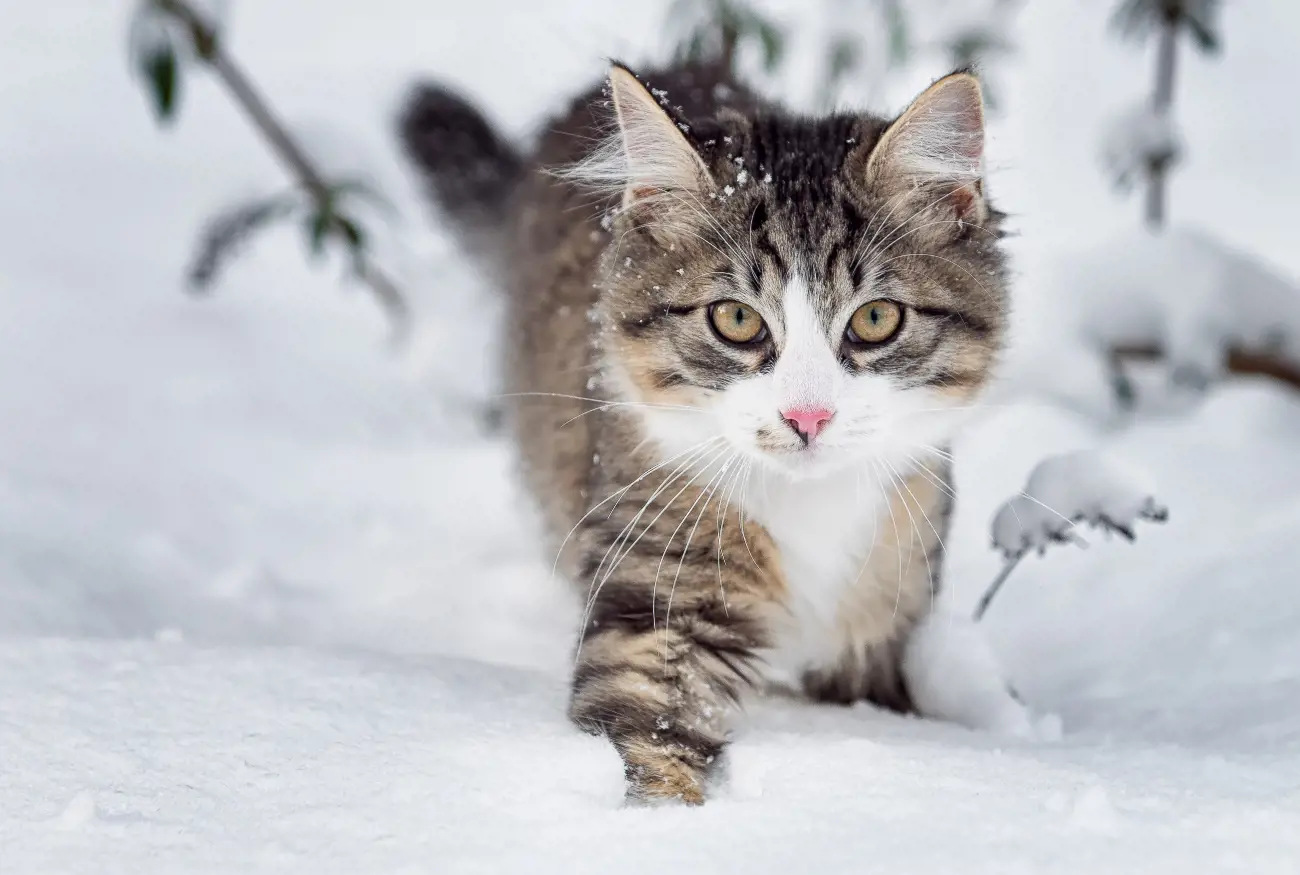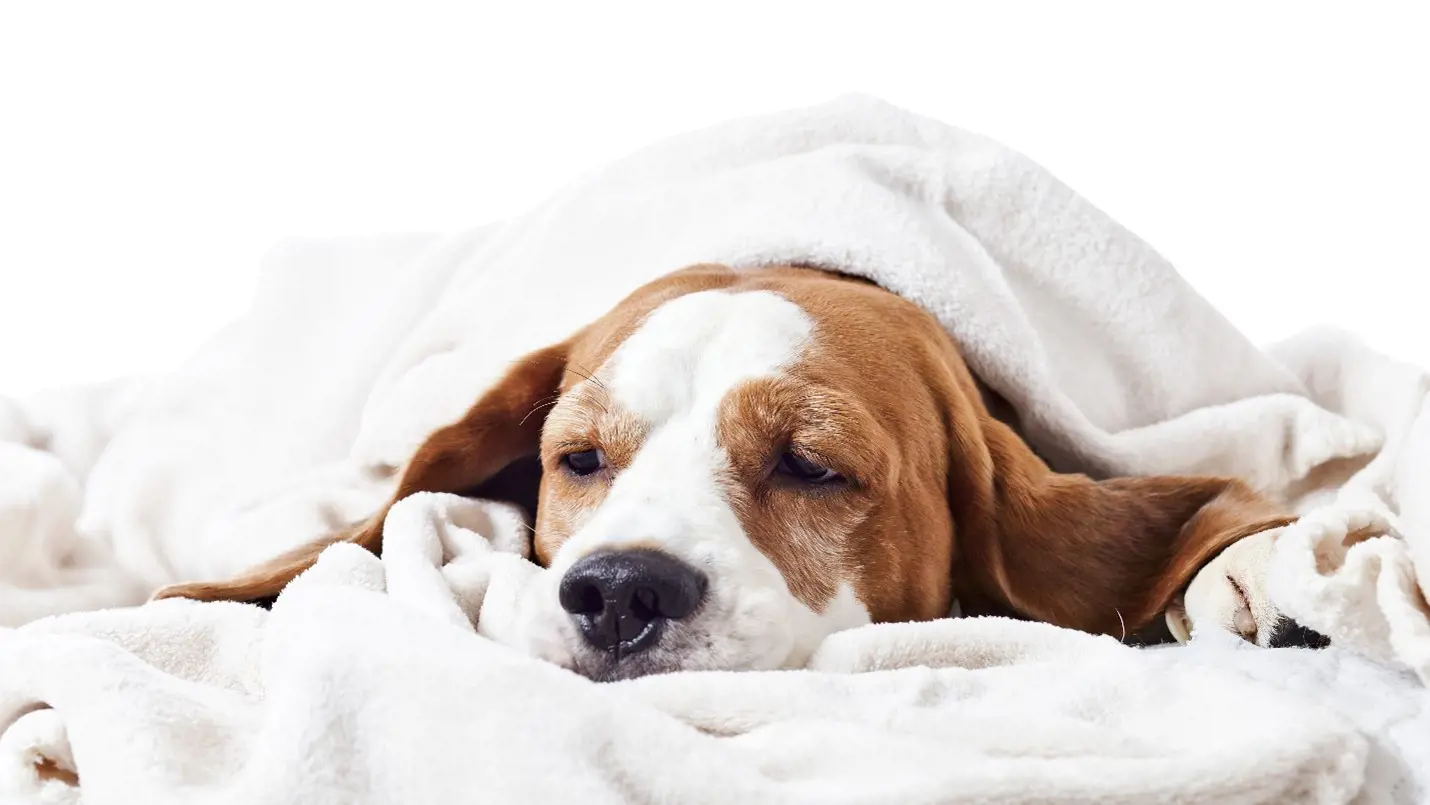Cat hernias: causes, symptoms and treatments
7th June, 2023
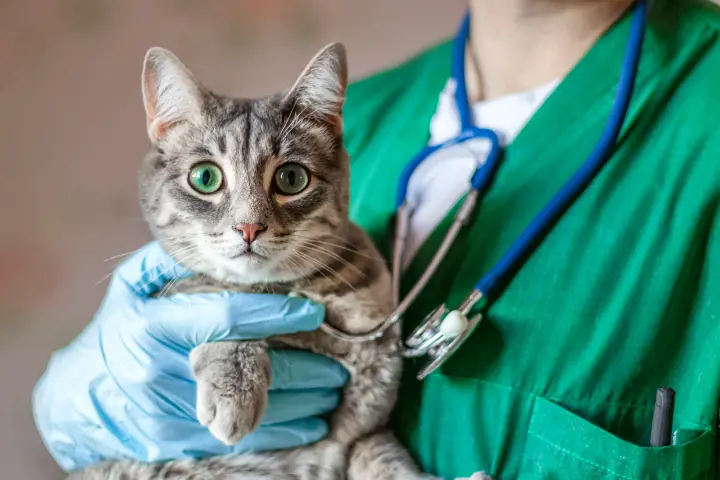
Would you know how to catch a cat hernia early on? Discover the tell-tale symptoms to look out for and how to get the right treatment.
Hernias aren’t overly common in cats, but if they do appear and you catch them early on, they’re usually not very serious – phew!
So, if you’ve been feeling an odd squishy bump while you cuddle your cat in the evenings or they seem to be a little unwell in general, you may not need to worry. If it is a hernia and you get them to the vet quickly, your kitty should be fine.
We know you want only the best for your feisty feline, so have put together this essential guide to spotting and treating cat hernias. You’ll also learn about the different types and how your cat insurance could help with those medical bills.
What is a cat hernia?
Before we jump into the symptoms, let’s be clear about what a hernia actually is.
If there’s an abnormal hole in your cat’s abdomen or diaphragm muscle wall, internal organs or fat can protrude through, causing that squishy lump you see and feel.
The thought of it might make you a little queasy, but it doesn’t tend to cause felines any pain and it’s very rarely life-threatening.
If the hernia is just fat, you may not notice any other signs your cat is suffering. But if it contains internal organs, it can grow and become sore and hot, which will produce more serious symptoms in your mog.
Protecting your pet with cat insurance means you’ll be able to get the urgent care they need in an emergency at the vet of your choice.
Signs your cat has a hernia
So, what are the tell-tale signs of a hernia in your feline friend?
- Squishy lump protruding from its body
- Nausea and vomiting
- Eating less than normal
- Lethargy
- Depression
Not all cats will develop the same symptoms, so even if you only notice one or two in your pet, it’s still a good idea to get a professional opinion.
Contact the 24/7 vet video consultation service if you’re a Purely Pets policyholder, or take your pet to the vet as soon as possible.
What types of cat hernia are there?
Although the classic hernia is a squishy protruding lump, they aren’t all the same. That’s why watching your pet for the other not-so-obvious signs is important.
Below, we take a closer look at three common types of hernia, ranging from uncomplicated to the more serious, which could require surgery.
Umbilical hernia
More common in kittens due to the way their umbilical ring has healed, this hernia is located near the belly button. It looks like a little squishy bulge, is usually soft to touch and is easier to see when they meow.
Many umbilical hernias close without needing further treatment by the time the kitten is 3 or 4 months old.
Inguinal hernia
This hernia is apparent in the groin area where intestines have pushed through and is usually easy to treat by pushing it back in.
Occasionally, the intestines can get trapped in the muscle wall, cutting off blood flow and causing the tissue to die, which is life-threatening. Pregnant female felines are at highest risk of inguinal hernia, so keep an eye on your pet if she’s carrying a litter.
To avoid this kind of hernia, you can get your cat spayed. The procedure won’t be covered by your cat insurance, but it stops your pet developing numerous health concerns associated with gestation and giving birth as well as unwanted pregnancies.
Hiatal hernia
You can’t see this hernia because it happens inside your cat’s body. It causes your pet’s stomach or other organs to slide into the chest cavity – often as the result of injury or due to genetics.
These hernias can come and go when caused by a birth defect, which is why they sometimes get called a sliding hernia. This type is extremely rare but will need medical intervention to help your kitty recover.
What causes cat hernias?
There are various reasons your cat might have a hernia, including:
- Injury or trauma - perhaps they were hit by a car?
- Straining when going to the toilet
- Weak muscle walls
- Pregnancy
- Bloating
- Birth defects
Looking for ways to keep your cat safe if you live by a busy road? We’ve got helpful tips elsewhere on our site.
How do vets diagnose cat hernias?
If the hernia is protruding, it’s quite obvious what it is, but your vet will be able to check more thoroughly to determine the hernia’s size, whether it’s soft or hard and what it contains. They’ll also use x-rays and ultrasounds to find internal hernias if they aren’t apparent from a physical examination.
Once your vet has a clear idea of the hernia’s nature, they’ll be able to come up with a treatment plan for your mischievous mog.
How are cat hernias treated?
Your cat has a confirmed hernia, so now what? The best case scenario requires your vet simply pushing the hernia back in. In more serious cases, your pet will need surgery.
You can expect your vet to push the hernia back in and use methods to prevent it from protruding again. As hernias are most common in kittens and younger cats, your vet may recommend the surgery at the same time as spaying.
Hoping to breed your feline? It’s best not to after they’ve had a hernia to prevent it reoccurring.
What happens in cat hernia surgery?
Has your vet recommended surgery for your cat’s hernia? It’s normal to feel a little worried about the procedure and the fact your pet will be sedated. To help you understand what this routine operation involves, we’ve put together a brief summary:
- You’ll need to avoid giving your cat food and limit their water intake the night before the procedure.
- Before going in for surgery, your vet will put them into a deep sleep with intravenous anaesthesia.
- Once under, the vet will shave and clean the area around the hernia to prevent infection and improve visibility. They’ll then make a clean incision to work through.
- During the surgery, any protruding organs will be pushed back into the abdominal cavity and any that are damaged will need to be repaired.
- Finally, your vet will seal the gap with existing tissue or use a synthetic surgical mesh to prevent the hernia from reappearing before sewing the opening together.
We understand that you might be worried about the costs involved with hernia surgery, but your cat insurance may be able to help with the bills. It’s also a good idea to check whether it can be done during spaying to avoid the double fees and excessive use of anaesthesia.
Cat hernia surgery aftercare
After surgery, your cat might need to spend a short time in hospital, but they’ll usually be let home after they’ve come around from the anaesthesia.
Your vet may prescribe some antibiotics to prevent infection in the wound and may recommend an Elizabethan collar to stop your pet from licking the area. Your pet may also be given pain killers so you should encourage them to rest and stay indoors as much as possible.
Cats Protection says that nausea and vomiting is common after surgery, so stick to light and plain meals for the first day or so. Be sure to provide access to clean and fresh water and let your vet know if you’re overly worried that they aren’t eating enough. You can also use our 24-hour vet video service for advice if you have cat insurance with Purely Pets.
How long will my cat need to rest after surgery?
We know it will be difficult but you’ll have to limit your cat’s activity for about a week after surgery. Any sudden movements could stretch the wound, slow down healing and even cause the incision to open again.
Struggling to keep your mischievous mog still after an op? Here are some helpful tips:
- Use a cat crate (but only when you really need to).
- Take down all your cat trees and other climbing opportunities.
- Don’t let your cat outdoors.
- Keep your post-surgery cat away from other pets.
- Maintain a calm environment at home.
You’ll need to keep an eye on your cat for the first few days after surgery, so try not to leave them alone for long periods. Someone needs to stay with them for the first 48 hours to make sure they’re okay.
Can a cat hernia heal on its own?
They can, but it depends on the type of hernia. If it’s an umbilical hernia in a kitten, it will usually disappear by the time they turn 3 or 4 months old.
If it’s protruding organs that are being cut off from the blood supply, then no – your cat will need surgery in this case.
Can I prevent a cat hernia?
There’s no guaranteed way of avoiding a cat hernia, especially if they’re born with it or it’s genetic. Keeping them indoors and making your home feline-friendly can lower their chances of getting into an accident, but it’s also not fool-proof.
Spaying your pet is an excellent way to remove the risk of hernias due to pregnancy. The procedure also comes with a host of other benefits to your curious cat, like:
- Reduces their risk of certain cancers, like mammary cancer.
- Removes the chances of them getting uterine and ovarian cancer.
- Stops them from roaming in search of a mate.
- Avoids them suffering from other pregnancy-related illnesses and complications.
Owning and caring for a pregnant feline can also be stressful for you, especially if she falls ill and you need to pay for care yourself. Learn more about how tell if your cat is pregnant to prepare yourself for this period of time.
Does a cat hernia hurt my pet?
You’ll be pleased to know that in most cases, a hernia won’t be painful for your pet. If it’s restricting blood flow to an organ, you might notice the area become red and sore to the touch. If your cat is in severe pain, they may start to vomit and seem very unwell in general.
What happens if a cat hernia goes untreated?
Again, this depends on the type of hernia. If it’s full of fat and not causing any serious harm to your pet, it may well disappear on its own. When it’s life-threatening and cuts off blood flow to organs and tissue, it can be fatal.
So, however serious you believe your cat’s condition to be, it’s always worth checking with the vet.
What’s the prognosis for a cat with a hernia?
As long as you get the hernia treated, your cat shouldn’t have further problems. Your vet will probably recommend that you also get your pet spayed to avoid passing the condition on to the next generation.
How much does it cost to treat a cat hernia?
The price of getting a hernia removed from your cat varies from vet to vet, but it’s usually well into the hundreds. Depending on the cause, it might be covered by your cat insurance, but it’s a good idea to neuter your pet to greatly reduce their risk of getting a hernia in the first place.
What other stomach problems are common in cats?
A hernia isn’t the only abdominal issue your beloved feline might face in its life. Here are five other common problems you should know.
1. Worms and parasites
Although the thought of these slithering inside your cat might make you shiver, intestinal parasites are rather common in felines – yes, even for indoor cats!
You’re most likely to come up against roundworm or tapeworm in the UK, but your cat is also at risk of:
- Heartworm
- Hookworm
- Lungworm
- Whipworm
If you notice your cat is losing weight despite eating more and has diarrhoea, vomiting, a dull coat and an enlarged abdomen, parasites could be to blame.
Don’t worry, though. They’re usually easy to treat with worming treatments and, as long as you give this medication to your pet every few months, you can prevent them from recurring.
Worming treatments are something all pet parents should budget for when they get a kitten, as well as vaccinations, spaying and cat insurance.
2. Hairballs
We’ve all heard of hairballs, right? But did you know they could actually pose a risk to your beloved pet’s insides?
Cat hair builds up on your pet’s tongue as it grooms, which it then swallows. The fur usually continues through the digestive tract until it comes out the other end and into your cat’s litter box!
Occasionally the fur remains in the stomach, bunching together and forming a hairball, which you’ve likely seen your kitty throwing up now and again.
If this only happens every month or two, there’s not a lot to worry about, but any more than every 30 days, it’s time to see the vet.
Luckily, there are ways to control hairballs fairly easily. Find out more about when to worry and possible treatment options in our article on helping cats with hairballs.
3. Constipation
When your cat can’t go, there could be a host of reasons why:
- Dehydration
- Pain while pooping
- Problems with the muscles in the colon
- Megacolon (often caused by cats holding it in too long)
The odd bout of constipation usually isn’t too serious, and there are ways to help your cat go to the loo again. According to International Cat Care, adding a little more fibre to their diet and making sure they’re drinking plenty of water should help.
When constipation comes back time and time again and you see your pet constantly straining while in their litter box, it’s time to see the vet. If other means aren’t successful, your cat might need surgery.
4. Food allergies
It’s not only humans who can become allergic and intolerant to specific foods – felines can, too! The most common allergies are to fish, dairy and beef. Don’t worry, though, they’re not particularly common, but it’s good to know what to look out for.
You might spot the usual gastrointestinal issues, like diarrhoea, gas and vomiting, but your cat may also experience itchy skin with red patches and even hair loss from all the scratching.
Unfortunately, there’s no simple cure to a food allergy (if you suffer from one, you’ll know). Treatment from your vet will usually include an elimination diet to find out what’s causing your cat’s upset tum.
Once you know the culprit, you’ll need to remove it from your pet’s diet entirely. Make sure your friends, family and neighbours don’t feed them either!
5. Inflammatory bowel disease
If your pet has nausea, vomiting, diarrhoea and a low appetite for over three weeks but you’re not sure why, they might have inflammatory bowel disease (IBD).
Just like with IBD in humans, no one knows the real cause, but it may be an upset to the gut microbiome, immune system issues or simply a genetic predisposition.
It’s also tough to diagnose because blood results don’t always give your vet a clear answer and the symptoms mimic many other gastrointestinal disorders.
The best way to diagnose the condition is with a biopsy. Once confirmed, your pet will likely need steroids and to go on a special diet, which you’ll need to stick to for the rest of their life to help them feel better.
Get cat insurance from the specialists
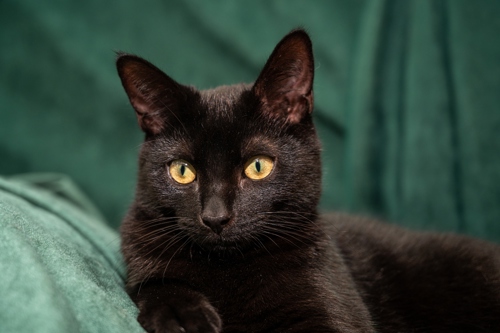
Thankfully, cat hernias are rare but they can be fatal if not treated properly.
With lifetime cat insurance from Purely Pets, you’ll be able to take your pet to the vet of your choice and get the emergency care they need without delay due to the alleviation of financial worry.
Choose from 15 levels of lifetime cover to find the right fit for you, your pet and your budget and enjoy unlimited round-the-clock access to vet video consultations with veterinary professionals. Our award-winning policies are easy to manage through our online portal, too.
So, don’t put off protecting your feline friend any longer! Get your cat insurance quote today.
Helpful Pages
Recent Posts
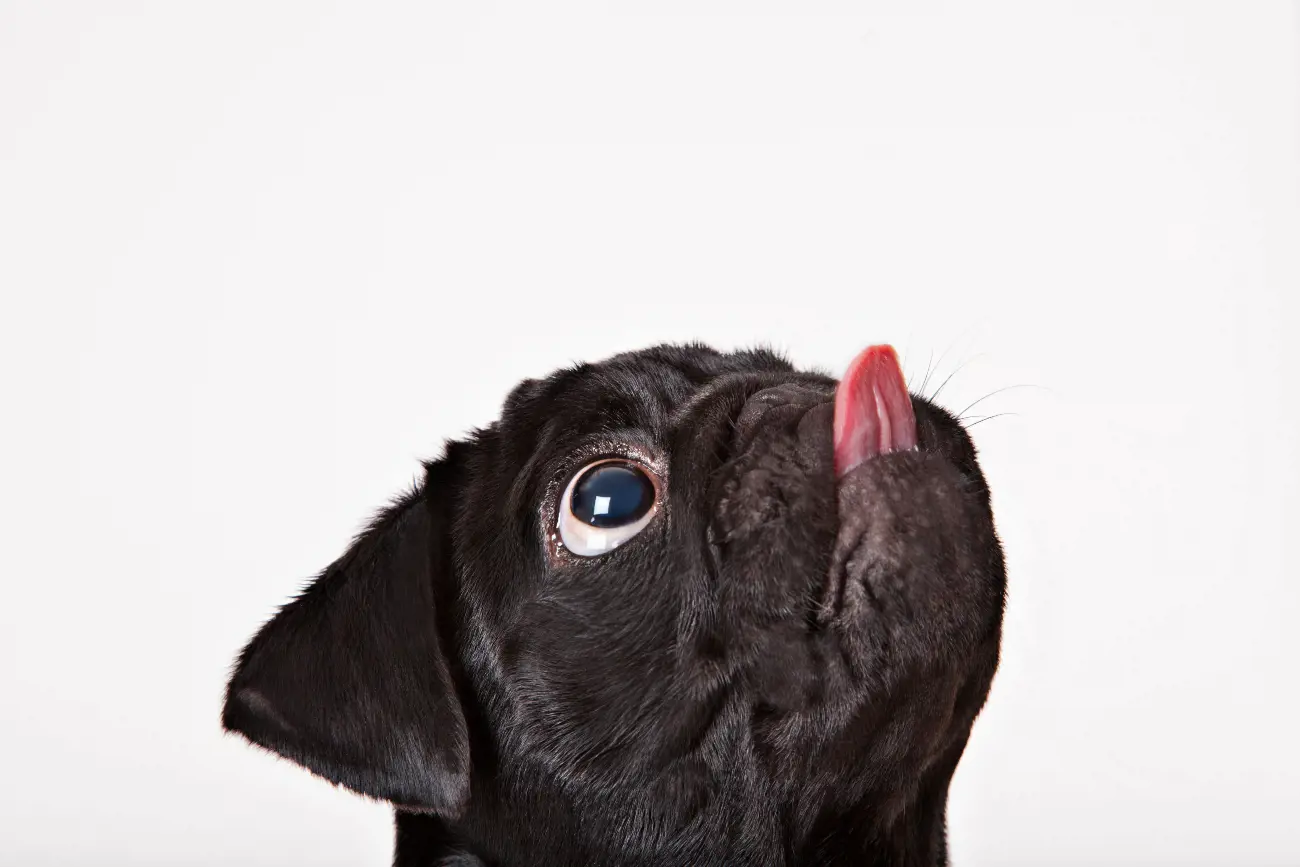
Why do Pugs lick the air?
02/10/24Pet Insurance Quote
- 98% claims paid *
- Claims paid directly to vets
- 24/7 vet video consultations
- Interest free monthly payments
